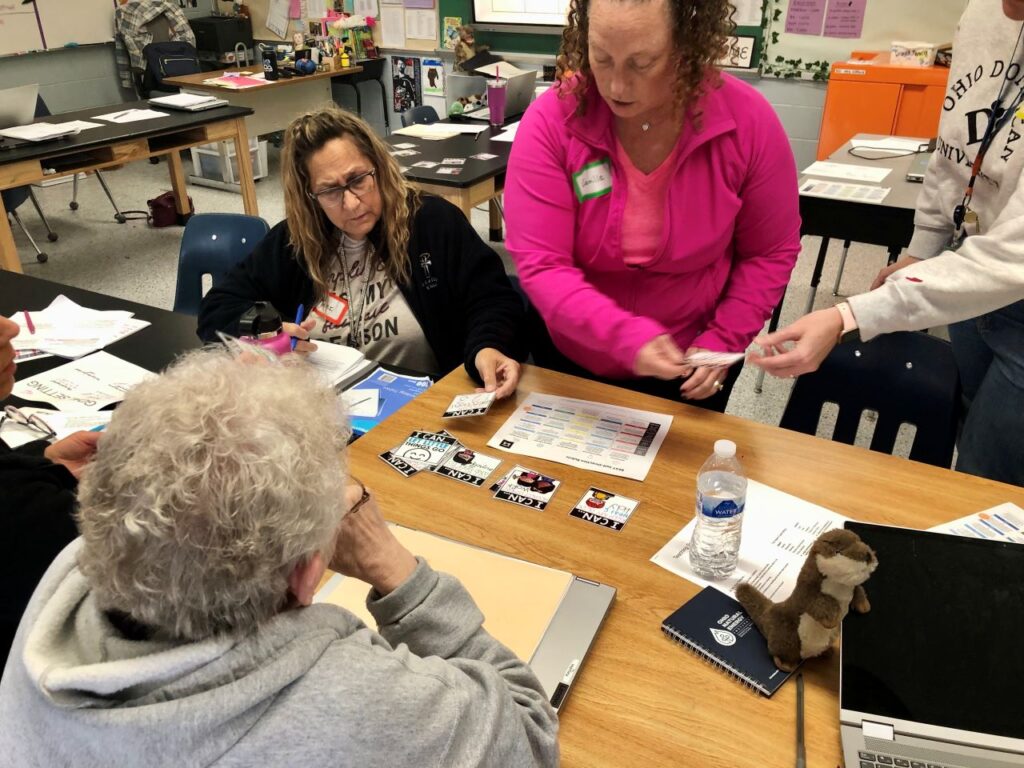
Professional Development
Self-Directed Learning
Engaging Students in Learning

Self-directed learning: enhancing student engagement and empowering teachers for success
Self-directed learning (SDL) enhances student engagement because the learner is self-motivated to seek opportunities to learn and to become actively engaged in those opportunities with a positive attitude.
Educators must teach students to learn as independently as possible by engaging students in learning through the creation of a classroom community that enhances student engagement by promoting student choice and emphasizing student direction in learning.
SDL is empowering teachers for success! Engaging students in learning can start simply by teachers infusing choices into meaningful learning events. Students become more motivated, interested and persistent in their learning. Having a choice (or choices) makes one feel a sense of ‘freedom’ to express their preferences for the direction they want to take their learning. (Wehmeyer & Zhao, 2020)
Students engage in goal setting and planning, as well as managing their learning, and monitoring their progress. Teachers enhance student engagement by aligning instruction with students’ strengths and abilities, engaging students in learning, emphasizing mastery, providing supportive formative feedback through meaningful dialogue.
Engage KM Educational Consulting for your professional development and instructional coaching needs!
Let us plan your professional development for one year or more to help you meet your school’s academic goal! We will custom-design your faculty workshops to engage and inspire teachers with innovative approaches and practical resources. We will coach individual teachers on instructional methods and technology integration to enhance student engagement.
SDL Prioritized: Fully engage students in learning
- SDL is prioritized as a fundamental school-wide goal, empowering teachers for success!
- SDL key skills are mapped out across grade levels and explicitly taught and reinforced.
- Instruction is engaging students in their own learning.
- Learning resources are easily accessible, enhancing student engagement.
- Classroom space is structured for student exploration and learner engagement.
- Students feel safe to explore and take risks.
- Supports are provided for all students to participate following Universal Design for Learning guidelines.
Making Self-Directed Learning Visible
“Self-directed learning thrives in an environment where students can check in and reflect on their thoughts, observations, and feelings during a lesson.” (France & Almarode, 2022, p. 26) Teachers must cultivate a culture of noticing in their classrooms so the learners are tuned in to the learning experience. There are two ways teachers can cultivate this:
- by consistently offering opportunities for students to show what they have learned
- by providing tools that scaffold ‘noticing’.
The strategies used to engage students and to ‘make learning visible’ require students to plan, select, and organize their learning experience, as well as to integrate their thoughts and feelings into this experience. France & Almarode (2022) described four easy strategies to make learning visible:
Pictures from our immersive workshops:



Suggested Readings:
Building Essential Skills Today (BEST): Self-Direction Toolkit. (n.d) Best-Future.org.
France, P. E. & Almarode, J. (2022, November). Learning to Notice. Educational Leadership, 80(3), 26-32.
McTigue, J. & Tucker, C. (2022, November). Developing Self-Directed Learners by Design. Educational Leadership, 80(3), 58-65.
Wehmeyer, M. & Zhao, Y. (2020) Teaching Students to Become Self-Determined Learners. Alexandria, VA: ASCD.
